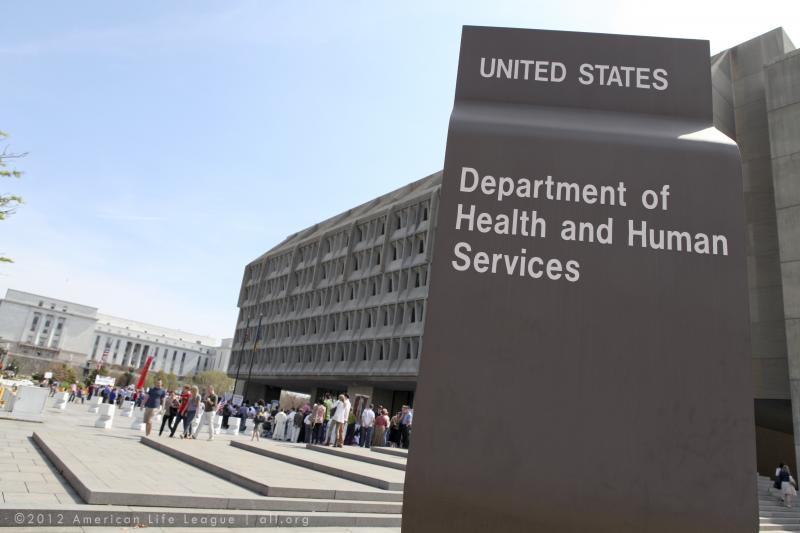
The Department of Health and Human Services (HHS) this week unveiled a notice of proposed rulemaking that would enact unprecedented regulatory reform by requiring regulations to go through retrospective review. Under the proposed rule, entitled “Securing Updated and Necessary Statutory Evaluations Timely,” HHS would be required to review existing regulations every ten years under the Regulatory Flexibility Act (RFA).
As many as 85 percent of HHS regulations created before 1990 have not been edited or updated, so this deregulatory action is long overdue.
The new proposal will address this mass of outdated regulations by providing a pathway to update, modernize, and eliminate regulations and help promote a healthcare system that provides Americans with high quality, patient centered care.
The proposal would require the vast majority of regulations to undergo a two-step review process. Under this process, the agency would first be required to determine the economic impact of any rule. If it is determined that a regulation has a significant economic impact, the agency is required to perform a more detailed review, which must consider a number of factors including how complex the rule is, whether it is duplicative in any way, and whether there are any technological, economic, or legal considerations in amending or rescinding the rule.
A small minority of regulations will be exempt from this process including regulations that are jointly issued with other agencies, regulations that legally cannot be rescinded, and regulations issued with respect to a military or foreign affairs function or addressed solely to internal management or personnel matters.
Retrospective review of regulations is a bipartisan issue that has been supported by every Democrat and Republican president in the last four decades. For instance:
- In 1978, President Carter signed Executive Order No. 12044, which directed agencies to “periodically review their existing regulations,” requiring agencies to consider, among other things, whether “technology, economic conditions or other factors have changed in the area affected by the regulation.”
- In 1981, President Reagan signed Executive Order 12291, which ordered agencies to “review existing regulations” in view of cost-benefit principles and potential alternatives. Reagan also signed Executive Order 12498 in 1985, which ordered agencies to create an annual plan of review for existing regulations.
- In 1992, President George H.W. Bush released the “Memorandum on Reducing the Burden of Government Regulation,” which instructed agencies to conduct a 90-day review “to evaluate existing regulations and programs and to identify and accelerate action on initiatives that will eliminate any unnecessary regulatory burden or otherwise promote economic growth.”
- President Clinton signed Executive Order No. 12866, which called for review of existing regulations to determine whether they have become “unjustified or unnecessary as a result of changed circumstances,” and “to confirm that regulations are both compatible with each other and [are] not duplicative or inappropriately burdensome in the aggregate” and requiring agencies to submit a plan to the White House Office of Information and Regulatory Affairs (OIRA) for period reviews.
- In 2001, President George W. Bush released a report to Congress that reviewed how to assess the costs and benefits of existing federal regulations, including their aggregate costs.
- President Obama signed Executive Order No. 13563, which ordered agencies “to facilitate the periodic review of existing significant regulations . . . to promote retrospective analysis of rules that may be outmoded, ineffective, insufficient, or excessively burdensome, and to modify, streamline, expand, or repeal them in accordance with what has been learned.”
This latest regulatory reform builds on these past actions. In addition, it builds on the record HHS has amassed in enacting significant regulatory relief during the COVID-19 pandemic. For instance, the agency issued emergency authorization for new COVID-19 tests and allowed out-of-state doctors to treat patients through telehealth. In addition, the agency eased rules to increase ventilator production and allow hospitals and providers significant flexibility regarding workplace rules, scope of practice requirements, and off-site treatment.
More recently, the agency unveiled a proposal streamlining the approval process of laboratory developed tests (LDT). The proposal removed duplicative regulations that required the FDA to conduct premarket review of LDTs even though diagnostic laboratories are already subject to regulation by the Centers for Medicare & Medicaid Services under the Clinical Laboratory Improvement Amendments of 1988. There was no statutory requirement for the FDA to exert oversight over LDTs – this requirement was created through unofficial guidance. This resulted in significant regulatory costs for laboratories — the FDA review process took an average of 262 days and impaired the ability for diagnostic laboratories to respond to public health emergencies.
The new proposal from HHS to require retroactive review of regulations will help ensure that these rules are efficient, modern, and are not overly burdensome to the American people. It builds on the recent record of regulatory reform and past efforts by Democrat and Republican administrations. Moving forward this rule should be swiftly finalized and implemented in order to provide important regulatory relief to taxpayers and the healthcare system.

